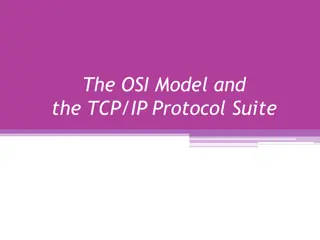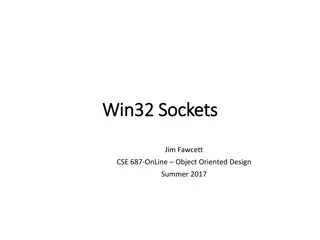Regulations on 1,2,3-Trichloropropane (1,2,3-TCP) Contaminant Levels
State Water Board conducted a public hearing regarding the regulations on 1,2,3-TCP, a carcinogenic chemical found in groundwater. The proposed regulations aim to set Maximum Contaminant Levels (MCL) and other safety measures to protect public health. Stakeholder meetings and public workshops were held to gather input before anticipated adoption and enforcement of the regulations. The history, occurrence data, sources, and health effects of 1,2,3-TCP were outlined in the presentation.
Download Presentation

Please find below an Image/Link to download the presentation.
The content on the website is provided AS IS for your information and personal use only. It may not be sold, licensed, or shared on other websites without obtaining consent from the author.If you encounter any issues during the download, it is possible that the publisher has removed the file from their server.
You are allowed to download the files provided on this website for personal or commercial use, subject to the condition that they are used lawfully. All files are the property of their respective owners.
The content on the website is provided AS IS for your information and personal use only. It may not be sold, licensed, or shared on other websites without obtaining consent from the author.
E N D
Presentation Transcript
1,2,3-Trichloropropane (1,2,3-TCP) Maximum Contaminant Level (MCL) State Water Resources Control Board (State Water Board) Division of Drinking Water (DDW) Public Hearing April 19, 2017
Public Hearing State Water Board is not taking action on the regulations today Public Hearing in accordance with Administrative Procedure Act requirements Intent is to receive public comments State Water Board will respond to public comments in the Final Statement of Reasons Written public comments must be submitted to State Water Board by Friday, April 21, at 5:00 p.m. 2
Schedule Focused Stakeholder Meetings: May 2016 Public Workshops: July 2016 Public Comment Period: March 4 April 21, 2017, 5:00 pm Public Hearing: April 19, 2017 Anticipated Board Adoption: late spring/summer 2017 Effective Date of Regulations: July 1, 2017 or later 3
Presentation Outline Overview of 1,2,3-Trichloropropane (1,2,3-TCP) Proposed Regulations Maximum Contaminant Level (MCL) Detection Limit for purposes of Reporting (DLR) Best Available Technology (BAT) Public Notification & Consumer Confidence Report Grandfathering Public Comments 4
1,2,3-TCP - History and Background 1,2,3-TCP: Was used as industrial solvent and for degreasing Was an ingredient in soil fumigants widely used for many decades Moves to groundwater aquifer w/little soil adsorption 5
1,2,3-TCP Occurrence Data 2001-2015 Occurrence Data: 471wells with confirmed detections above 5 parts per trillion (ppt) Range of Detections: 5 ppt to >10,000 ppt (Proposed DLR is 5 ppt) Vast majority in groundwater 6
Central Valley Sources with Average 1,2,3-TCP Concentration above 5 ppt (2001-2015) 7
1,2,3-TCP Health Effects 1,2,3-TCP is considered carcinogenic Exposure routes: Drinking water Body absorbs much or all of 1,2,3-TCP in the drinking water Exposure routes: Inhalation Body absorbs some of the trace levels of 1,2,3-TCP that can be found in homes receiving contaminated water. 8
Public Health Goal (PHG) The PHG of 0.7 ppt is based on chronic (long- term) exposure: drinking 2 liters of water per day over a lifetime (70 years) breathing air containing 1,2,3-TCP over a lifetime PHGs are not regulatory requirements and can be set lower than detection limits or treatment capability 9
1,2,3-TCP MCL Development Process Health and Safety Code Section 116365: State Water Board must set the MCL at a level that is as close as feasible to the corresponding public health goal placing primary emphasis on the protection of public health, and that, to the extent technologically and economically feasible 10
PHG Published Data Collection DLR Determination Major Steps in MCL Development Process for 1,2,3-TCP Identify Range of MCLs for Evaluation Calculate Costs (Treatment, Laboratory, and Monitoring) Identify Impacted Population Determine BAT Determine Health Benefits Evaluation BAT Best Available Treatment Technology DLR Detection Limit for Purposes of Reporting MCL Maximum Contaminant Level PHG Public Health Goal 11 MCL Selected
1,2,3-TCP MCL Development Additional Requirements for Rulemaking External Scientific Peer Review Health and Safety Code 57004 http://www.waterboards.ca.gov/water_issues/programs/peer_r eview/ Compliance with CEQA Major Regulations Analysis State Administrative Procedure Act requirement for any proposed regulation with economic impact > $50 million http://www.dof.ca.gov/Forecasting/Economics/Major_Regula tions/Major_Regulations_Table/ 12
1,2,3-TCP MCL Proposed Regulation Proposed MCL of 5 ppt is based on the following considerations: Technical Feasibility: - ELAP-Certified Laboratories Analytical Detection Limit of 5 ppt - The standard treatment for 1,2,3-TCP (Granular Activated Carbon) is proven, cost-effective and reliable down to 5 ppt Economic Feasibility Protection of Public Health: - 5 ppt would result in a theoretical cancer risk of less than 1/100,000 - GAC reduces inhalation exposure (not addressed by bottled water) 13
1,2,3-TCP MCL Proposed Regulation Existing Regulations Compliance Based on Running Annual Average (RAA) May be out of compliance before collecting 4 quarterly samples Monitoring Initial quarterly monitoring for 1 year starts January 2018 14
1,2,3-TCP MCL Proposed Regulation Monitoring (continued) Initial quarterly monitoring Subsequent routine monitoring (every 1 or 3 years) If 1,2,3-TCP is detected at or above the MCL More frequent monitoring is then required to determine compliance with MCL Consistent with existing regulations for Synthetic Organic Chemicals 15
1,2,3-TCP DLR Proposed Regulation Proposed DLR of 5 ppt Provides a consistent definition of non- detect when monitoring for 1,2,3-TCP Analytical methods have been in use for over a decade More than 20 CA ELAP-certified laboratories using the methods List of laboratories on the State Water Board website 16
1,2,3-TCP BAT Proposed Regulation The proposed BAT is Granular Activated Carbon(GAC) Already in use for 1,2,3-TCP treatment Removes 1,2,3-TCP to less than the proposed DLR Readily available and reliable technology BAT designation does not prevent permitting of alternative technologies capable of removing 1,2,3-TCP. 17
1,2,3-TCP MCL Treatment Options Options for a well that is out of compliance: Provide treatment (GAC or other District-approved treatment) Drill new well Remove the well from use Purchase water from a nearby utility Consolidate with a nearby larger water system Blend contaminated water with a clean source to reduce overall concentrations of 1,2,3-TCP to below MCL 18
1,2,3-TCP Public Notification & Consumer Confidence Report Proposed Regulation Public Notification & Consumer Confidence Report New language for 1,2,3-TCP health effects New language for sources of 1,2,3-TCP contamination 19
Proposed Grandfathering Regulations Addition to Organic Chemical Initial Monitoring regulations Allows samples collected prior to MCL effective date to be substituted for initial monitoring samples Requests must be made in writing to applicable District Office Can only substitute samples in like calendar quarters (e.g. Q2 2016 for Q2 2018) Can only substitute three of the four quarterly samples must collect at least one sample during initial monitoring Will also apply to future organic chemical MCLs 20
Additional Information 1,2,3-TCP information website http://www.waterboards.ca.gov/drinking_water/c ertlic/drinkingwater/123TCP.shtml Or search for SWRCB 123 1,2,3-TCP proposed regulation website http://www.waterboards.ca.gov/drinking_water/c ertlic/drinkingwater/123TCP_SBDDW-17- 001.shtml 21























